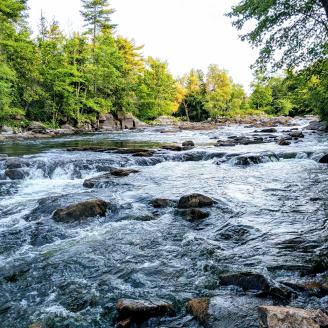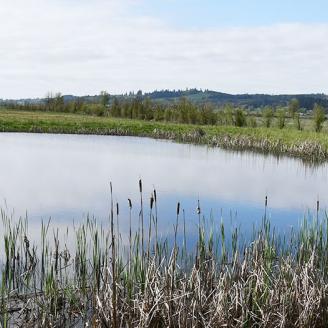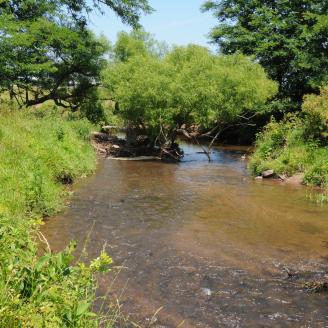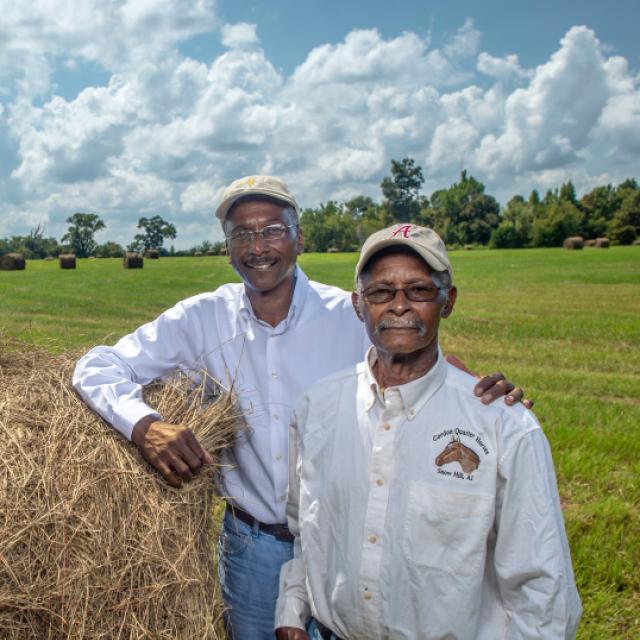
The Emergency Watershed Protection (EWP) Program, a federal emergency recovery program, helps local communities recover after a natural disaster strikes.
North Dakota Watershed Programs

Emergency Watershed Protection
The Emergency Watershed Protection Program (EWP) is available to provide technical and financial assistance where damage done by a natural disaster poses an imminent threat to life or property, or both.

Watershed and Flood Prevention Operations
The Watershed and Flood Prevention Operations (WFPO) Program (Watershed Operations) includes the Flood Prevention Operations Program authorized by the Flood Control Act of 1944 (P.L. 78-534) and the provisions of the Watershed Protection and Flood Prevention Act of 1954 (P.L. 83-566).

Watershed Rehabilitation
The Watershed Rehabilitation Program helps project sponsors rehabilitate aging dams that were originally constructed through the NRCS Watershed Protection and Flood Prevention Operations Program (WFPO). As of 2020, in ND there have been 14 high hazard dams, 26 significant hazard dams, and 9 low hazard dams constructed through the WFPO program in North Dakota.
- National Web site - Emergency Watershed Protection Program (EWP)
- National Web site - EWP Floodplain Easement Option
North Dakota Program Contacts:
Cindy Zachmeier
Assistant State Conservationist-Easements (Acting)
701-530-2023
cindy.zachmeier@usda.gov
Erica Althoff
State Conservation Engineer (Acting)
701-658-3352
erica.althoff@usda.gov
Other Disaster Assistance
Disaster Assistance Programs At a Glance
USDA is ready to help in the aftermath of natural disasters. Find which program best fits your current situation and needs.
USDA along with other agencies offer a wide range of disaster recovery assistance following these unfortunate events. Check out the agencies and their programs below for more information.
eQIP
Farmers, ranchers, and non-industrial private forestland owners can apply for resource assistance through the Environmental Quality Incentives Program. Eligible land includes cropland, rangeland, and non-industrial private forestland. Recovery assistance includes but is not limited to: immediate soil erosion protection, minimizing noxious and invasive plant proliferation, protecting water quality, restoring livestock infrastructure necessary for grazing management, emergency animal mortality management.
Emergency Animal Mortality Management
When catastrophic non-disease natural events (ie. flood, fire, weather-related) occur, financial assistance for emergency animal mortality management may be offered.
Producers can contact the local field office at that time for more details.
Ready to get started?
Contact your local service center to start your application.
How to Get Assistance
Do you farm or ranch and want to make improvements to the land that you own or lease?
Natural Resources Conservation Service offers technical and financial assistance to help farmers, ranchers and forest landowners.

To get started with NRCS, we recommend you stop by your local NRCS field office. We’ll discuss your vision for your land.
NRCS provides landowners with free technical assistance, or advice, for their land. Common technical assistance includes: resource assessment, practice design and resource monitoring. Your conservation planner will help you determine if financial assistance is right for you.
We’ll walk you through the application process. To get started on applying for financial assistance, we’ll work with you:
- To fill out an AD 1026, which ensures a conservation plan is in place before lands with highly erodible soils are farmed. It also ensures that identified wetland areas are protected.
- To meet other eligibility certifications.
Once complete, we’ll work with you on the application, or CPA 1200.
Applications for most programs are accepted on a continuous basis, but they’re considered for funding in different ranking periods. Be sure to ask your local NRCS district conservationist about the deadline for the ranking period to ensure you turn in your application in time.
As part of the application process, we’ll check to see if you are eligible. To do this, you’ll need to bring:
- An official tax ID (Social Security number or an employer ID)
- A property deed or lease agreement to show you have control of the property; and
- A farm number.
If you don’t have a farm number, you can get one from USDA’s Farm Service Agency. Typically, the local FSA office is located in the same building as the local NRCS office. You only need a farm number if you’re interested in financial assistance.
NRCS will take a look at the applications and rank them according to local resource concerns, the amount of conservation benefits the work will provide and the needs of applicants. View Application Ranking Dates by State.
If you’re selected, you can choose whether to sign the contract for the work to be done.
Once you sign the contract, you’ll be provided standards and specifications for completing the practice or practices, and then you will have a specified amount of time to implement. Once the work is implemented and inspected, you’ll be paid the rate of compensation for the work if it meets NRCS standards and specifications.

